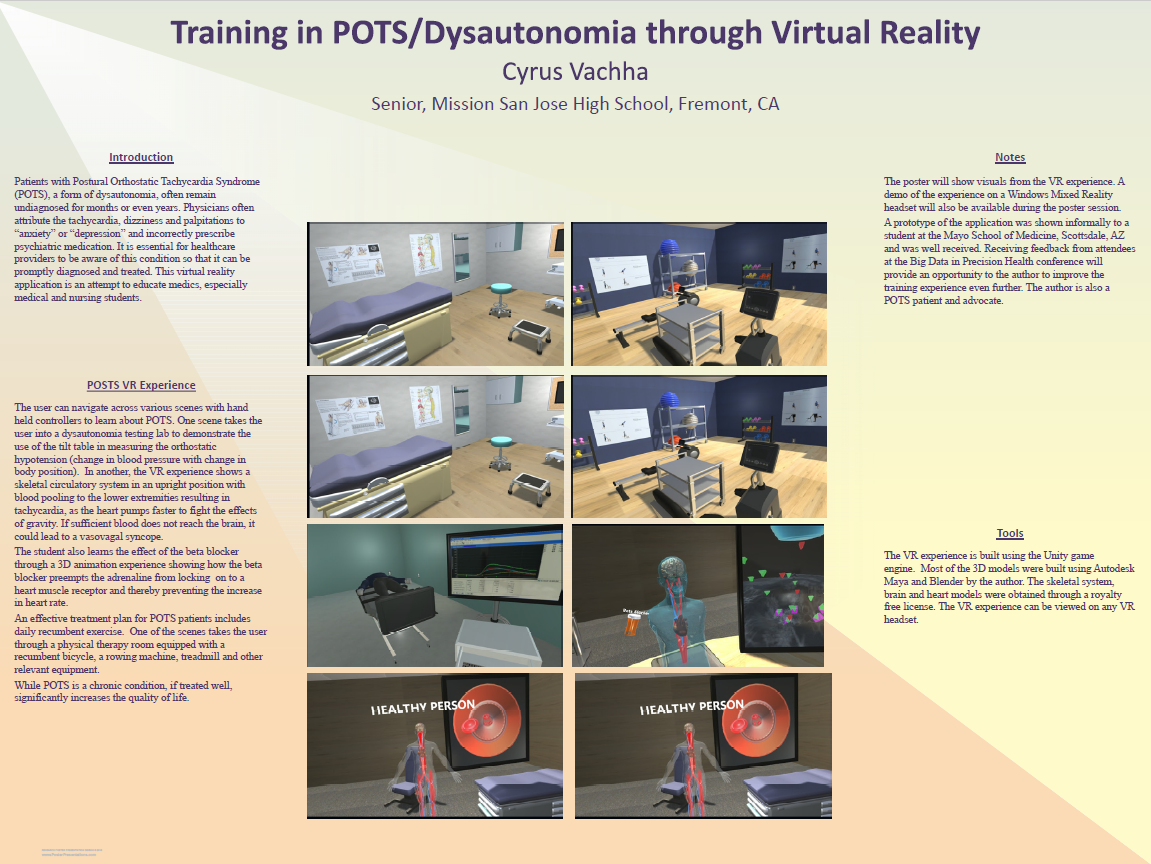Dysautonomia VR
Medical VR
Introduction
Patients with Postural Orthostatic Tachycardia Syndrome (POTS), a form of dysautonomia, often remain undiagnosed for months or even years. Physicians often attribute the tachycardia, dizziness and palpitations to “anxiety” or “depression” and incorrectly prescribe psychiatric medication. It is essential for healthcare providers to be aware of this condition so that it can be promptly diagnosed and treated. This virtual reality application is an attempt to educate medics, especially medical and nursing students.
POTS VR Experience
The user can navigate across various scenes with hand held controllers to learn about POTS. One scene takes the user into a dysautonomia testing lab to demonstrate the use of the tilt table in measuring the orthostatic hypotension (change in blood pressure with change in body position). In another, the VR experience shows a skeletal circulatory system in an upright position with blood pooling to the lower extremities resulting in tachycardia, as the heart pumps faster to fight the effects of gravity. If sufficient blood does not reach the brain, it could lead to a vasovagal syncope.
The student also learns the effect of the beta blocker through a 3D animation experience showing how the beta blocker preempts the adrenaline from locking on to a heart muscle receptor and thereby preventing the increase in heart rate. An effective treatment plan for POTS patients includes daily recumbent exercise. One of the scenes takes the user through a physical therapy room equipped with a recumbent bicycle, a rowing machine, treadmill and other relevant equipment. While POTS is a chronic condition, if treated well, significantly increases the quality of life.
Development Tools
The VR experience is built using the Unity game engine. Most of the 3D models were built using Autodesk Maya and Blender by the author. The skeletal system, brain and heart models were obtained through a royalty free license. The VR experience can be viewed on any VR headset.
